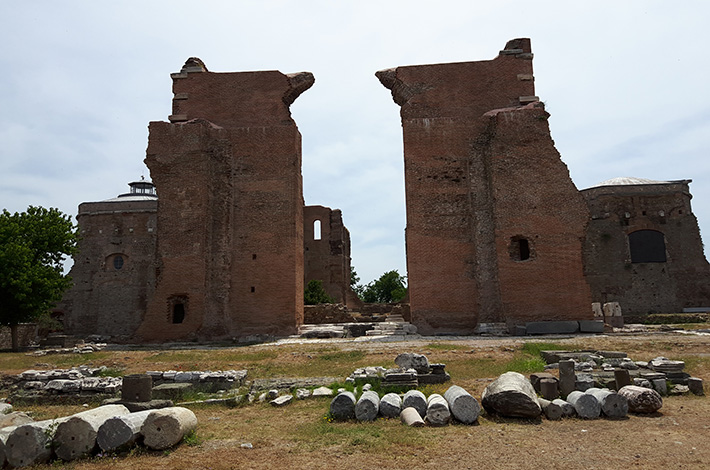The discovery of the reliefs of the Altar of Zeus within the Byzantine wall on the Acropolis in 1865 led to the first excavations in Pergamon. The first official excavations run from 1878 to 1886. To protect the artefacts unearthed during these excavations, a small storage museum was created in the garden of the excavation house. In 1924, some of the archaeological artefacts were moved to a building in the city centre, which was also used as the People's House Building in 1934. The management of this museum was taken over by Osman Bayatlı in 1928 and he added ethnographic artefacts to the museum collection. In 1932, Marshal Fevzi Çakmak visited Bergama and instructed the establishment of a museum. The museum building was built by architects Bruno Meyer and Harold Hanson within the framework of Turkish-German co-operation, inspired by the plan of the Altar of Zeus. The foundation of the Museum was laid in 1933 in its present location, which was an old cemetery area. On 30 October 1936, the Bergama Museum was opened to visitors. The museum features a collection of archaeological artifacts primarily from excavations in the Acropolis, Asclepion, Red Courtyard (Serapeion), and Musalla Cemetery. The museum also exhibits artefacts from the ancient cities of Pitane (Çandarlı), Myrina (Güzelhisar), Gryneion (Yeni Şakran), and Kestel-Yortanlı (Allionai) Dam Rescue excavations in the vicinity of Bergama, as well as artefact groups belonging to the Bronze Age, such as bowls and jars for daily use or votive purposes, Yortanlı vessels, and beak-mouthed vessels. The collection includes locally produced Megara bowls, appliquéd ceramics, Pergamon sigillata, oil lamps, and cistophor coins minted in Pergamon for the first time. The ethnography section features a rich collection of artefacts that reflect the traditional social life and cultural values of Bergama and its region. The Bergama region boasts a rich collection of local clothing, including those worn by the Yörük, Turkmen, and Çepni tribes. Additionally, examples of wedding dresses and daily wear from Bergama, as well as carpets, rugs, and saddlebags such as Yuntdağı, Kozak, and Yağcıbedir, can be found. These items are significant as Bergama is one of the major centres for carpet production in Anatolia. Personal clothing worn by Tuzcu Efe, a well-known efe of Bergama during the War of Independence, also forms an important part of the collection.
BERGAMA KIZILAVLU (BASILICA) ARCHAELOGICAL SITE





